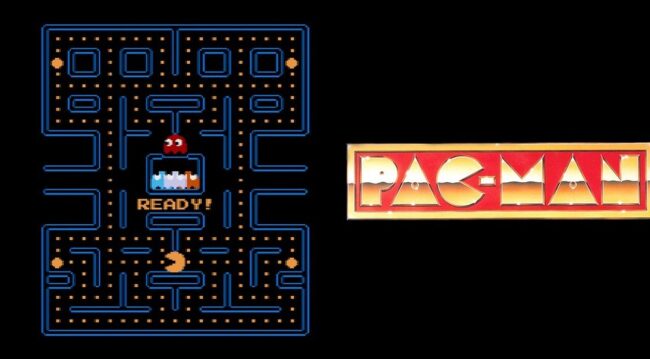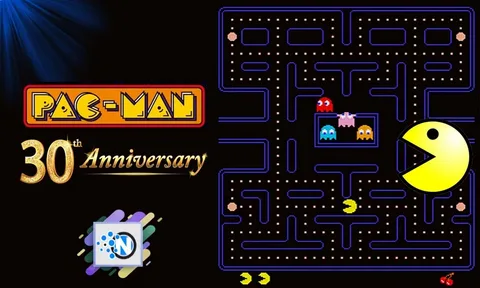In 2010, the gaming world celebrated a landmark milestone — the 30th anniversary of Pac-Man, one of the most iconic and beloved video games in hi
In 2010, the gaming world celebrated a landmark milestone — the 30th anniversary of Pac-Man, one of the most iconic and beloved video games in history. Since its launch in 1980, Pac-Man has not only shaped the arcade era but also left an indelible mark on popular culture worldwide. This 30th anniversary was a perfect moment to reflect on the game’s origins, its revolutionary impact on the gaming industry, and the reasons behind its enduring legacy that continues to captivate players of all ages.
This article provides an in-depth exploration of the Pac-Man phenomenon, tracing its development, cultural significance, anniversary celebrations, and how the game remains relevant today. You’ll also find an FAQ section addressing some of the most commonly asked questions about the franchise.
Must visit: swiftnewsnow

The Origins of Pac-Man: A Game-Changer in the Arcade Scene
In the late 1970s, the video game industry was dominated by space shooters and simple sports simulations, predominantly appealing to young male players. Namco game designer Toru Iwatani envisioned something new — a game that would appeal to a broader audience, including women and families.
Drawing inspiration from the shape of a pizza missing a slice, Iwatani created the bright yellow, circular character with a large mouth: Pac-Man. The core gameplay involved guiding Pac-Man through a maze, eating pellets while avoiding four ghosts with distinct personalities: Blinky, Pinky, Inky, and Clyde. The innovative twist was the power pellets, which gave Pac-Man the temporary ability to eat the ghosts, flipping the hunter-prey dynamic.
Released in Japan in May 1980 and soon after in North America, Pac-Man quickly gained massive popularity for its approachable gameplay, engaging character design, and addictive challenge.
Why Pac-Man Was Revolutionary
Expanding the Audience
Pac-Man was one of the first video games designed specifically to attract a diverse player base, including women and casual gamers. This inclusivity helped grow the arcade audience exponentially.
Introducing Character-Driven Gameplay
Unlike many games of its time that featured generic shapes or spacecraft, Pac-Man presented characters with personalities and behavior patterns. This brought an emotional connection and strategic depth to the gameplay.
Non-Violent, Strategy-Based Play
While arcade hits like Space Invaders focused on shooting enemies, Pac-Man was non-violent, emphasizing navigation, evasion, and timing, appealing to a wider demographic and family-friendly venues.
Simple Controls with Complex Challenges
With just a joystick for movement, the game was accessible, yet the intelligent ghost AI and maze layouts required thoughtful strategies and precise timing, offering endless replayability.
Pac-Man’s Meteoric Rise and Cultural Impact
The success of Pac-Man rapidly transcended the arcade:
- Merchandising Explosion: From t-shirts and toys to lunchboxes and board games, Pac-Man became a merchandising sensation.
- Television Series: The 1982 animated Pac-Man TV show introduced the characters to millions, further embedding the franchise in pop culture.
- Music: The novelty song “Pac-Man Fever” topped charts, reflecting the game’s cross-media appeal.
- Global Recognition: Pac-Man became a worldwide symbol of video gaming, with his image recognized by people of all ages, even outside gaming circles.
Commemorating 30 Years of Pac-Man
The 30th anniversary of Pac-Man in 2010 was a multi-faceted celebration reflecting both nostalgia and innovation.
New Game Releases and Revamps
To honor the milestone, Namco released updated versions and new titles:
- Pac-Man Championship Edition DX: A reimagined version with enhanced graphics, new maze designs, and faster gameplay.
- Mobile Adaptations: The game was optimized for smartphones and tablets, ensuring Pac-Man remained accessible to younger generations.
- Multiplayer Experiences: Titles such as Pac-Man Party introduced multiplayer modes, adding a social element to the classic gameplay.
Special Edition Merchandise
Namco and partners released limited-edition products commemorating the anniversary, including:
- Apparel with retro and modern Pac-Man designs.
- Collectible statues, artwork, and arcade cabinet replicas.
- Special gaming hardware featuring Pac-Man branding.
Exhibitions and Public Events
Museums and gaming conventions hosted exhibitions displaying Pac-Man’s history, artwork, and original arcade cabinets. Fans gathered for tournaments, talks, and celebrations worldwide.
Online Community Celebrations
Social media and fan communities held challenges, art contests, and shared memories, rekindling enthusiasm and connecting longtime fans with new players.
Why Pac-Man’s Appeal Endures
Timeless Gameplay Mechanics
The core gameplay of maze navigation, pellet consumption, and ghost evasion remains compelling and accessible across generations. It strikes a perfect balance of simplicity and challenge.
Nostalgia Factor
For many players, Pac-Man is synonymous with childhood memories and the golden age of arcades. Nostalgia drives continued interest, replay, and collecting.
Constant Evolution
The franchise adapts to new platforms and gameplay styles, from mobile phones and consoles to VR, ensuring its relevance in a rapidly changing gaming landscape.
Cultural Significance
Pac-Man symbolizes the early era of video gaming and is often referenced in media, advertising, and pop culture, maintaining its iconic status.
Pac-Man’s Impact on the Gaming Industry
Pac-Man influenced the industry in numerous ways:
- Pioneering the Mascot Concept: It introduced the idea of a character mascot, paving the way for Nintendo’s Mario and Sega’s Sonic.
- Innovative AI Design: The distinct ghost behaviors provided an early model of AI programming in games.
- Expanding Market Demographics: Demonstrated the commercial viability of games targeting women and families.
- Cross-Media Branding: Proved that video games could be the foundation for merchandise, television, and music.
Pac-Man’s Place in Today’s Gaming Culture
Decades later, Pac-Man remains relevant and influential:
- New Releases: Games like Pac-Man 256 and Pac-Man Championship Edition 2 offer fresh twists while respecting the classic gameplay.
- Crossovers: Pac-Man appears in titles like Super Smash Bros. and LEGO Dimensions, keeping the character visible in mainstream gaming.
- Competitive Play: Speedrunning communities and high-score tournaments keep the game competitive.
- Educational Uses: Pac-Man is often used to teach concepts in AI, programming, and game design.
Frequently Asked Questions (FAQs)
Q1: When was Pac-Man originally released?
Pac-Man was released in Japan in May 1980 and in North America later that year.
Q2: Who created Pac-Man?
The game was designed by Toru Iwatani at Namco.
Q3: What is the main objective of the game?
To eat all the pellets in the maze while avoiding the ghosts. Power pellets let Pac-Man eat the ghosts temporarily.
Q4: What are the ghost names and behaviors?
Blinky (red) chases aggressively, Pinky (pink) tries to ambush, Inky (blue) behaves unpredictably, and Clyde (orange) moves randomly.
Q5: How was the 30th anniversary celebrated?
Through new game releases, merchandise, exhibitions, and community events.
Q6: Why is Pac-Man considered a cultural icon?
Because of its innovative gameplay, broad appeal, and lasting influence on gaming and popular culture.
Q7: Is Pac-Man still popular today?
Yes, with ongoing new game releases, appearances in crossover titles, and a dedicated fan community.
Conclusion
The 30th anniversary of Pac-Man celebrated more than a game; it honored a cultural touchstone that shaped the video game industry and entertained generations. From its simple yet ingenious design to its charming characters and groundbreaking appeal, Pac-Man proved that video games could be universally enjoyable and culturally significant.
As Pac-Man continues to evolve and inspire, the 30th anniversary stands as a reminder of how this humble arcade game became a timeless icon — a symbol of fun, innovation, and the enduring power of play.




COMMENTS